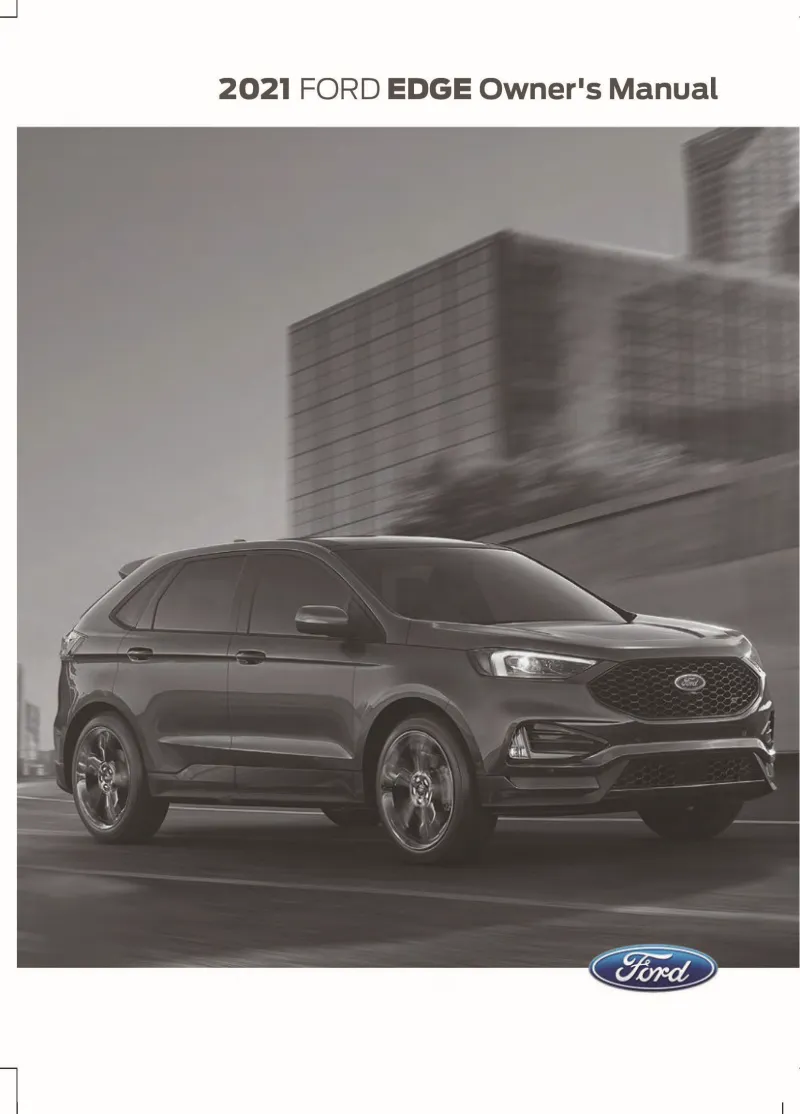2021 Ford Edge Owner's Manual

Table of Contents
2021 Ford Edge Overview
Introduction
The 2021 Ford Edge is a midsize SUV that expertly blends style, performance, and cutting-edge technology. Designed for the modern driver, it delivers a smooth ride and ample interior space, making it suitable for families and adventurers alike. With a robust presence on the road and an array of innovative features, the Edge stands out in its class, embodying Ford's commitment to quality and advanced engineering.
Powertrains
The 2021 Edge offers two impressive powertrains to meet diverse driving needs. The standard 2.0-liter EcoBoost inline-4 engine generates 250 horsepower and 275 lb-ft of torque, providing a great balance between power and fuel efficiency. For those seeking a more spirited drive, the available 2.7-liter EcoBoost V6 engine produces a remarkable 335 horsepower and 380 lb-ft of torque. Both engines are paired with an 8-speed automatic transmission, ensuring seamless shifts and responsive handling, whether on city streets or open highways.
Trims
The Ford Edge is available in four distinctive trims: SE, SEL, Titanium, and ST. Each trim builds on the previous one by adding enhanced features and luxurious touches. The SE offers essential tech and safety features, while the SEL enhances comfort with leatherette seating and additional connectivity options. The upscale Titanium trim adds premium sound systems and chrome accents, and the performance-oriented ST boasts sport-tuned suspension and advanced driving dynamics, ideal for enthusiasts.
Features
The 2021 Ford Edge comes equipped with a suite of modern features designed for convenience and connectivity. Standard features include a SYNC infotainment system with a 12-inch touchscreen, Apple CarPlay, and Android Auto compatibility. Advanced safety technologies like Ford Co-Pilot360, which integrates blind-spot monitoring, adaptive cruise control, and automatic emergency braking, enhance peace of mind on every journey.
Owner's Manual
The comprehensive owner’s manual for the 2021 Ford Edge serves as an essential guide, outlining everything from safety features to maintenance tips. It provides detailed explanations of the vehicle's technology, optimal driving practices, and troubleshooting advice. Offering insights into warranty coverage and service schedules, the manual ensures that owners can maximize their Edge ownership experience while keeping it in peak condition.
User manual download
The Ford Edge owner manual for the 2021 model year is to be found in PDF downloadable format on this page. The owner manual for the model year 2021 is free and in English, but the repair manuals are usually not easy to get and may cost more.
Manual Questions
Fill the form below and someone will help you!

